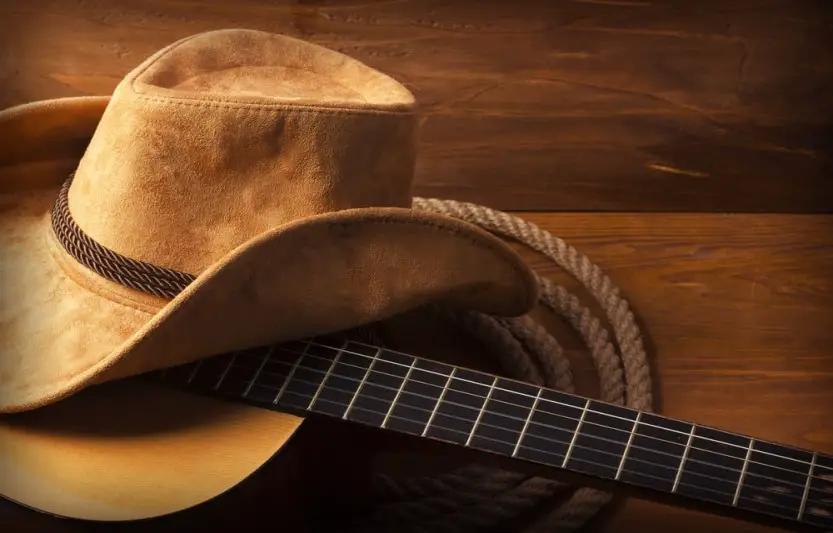The Unlikely Musical Innovators Who Transformed Contemporary Country Music
How Cross-Genre Influences Created Today’s Dynamic Country Sound
Contemporary country music’s evolution represents one of the most fascinating examples of genre transformation in modern music history. While traditional country purists might expect the genre’s development to stem exclusively from legendary figures like Hank Williams, Johnny Cash, or Patsy Cline, the reality reveals a far more complex and surprising narrative. Today’s chart-topping country artists draw inspiration from an eclectic array of musicians who never performed at the Grand Ole Opry, yet whose innovative approaches to songwriting, production, and performance have fundamentally reshaped what country music can be.
The Foundation of Genre Evolution
Country music has historically functioned as a melting pot of American musical traditions, but the contemporary era has witnessed an unprecedented expansion of influences that continue to reshape the genre’s boundaries. From its early days, when steel guitars and fiddles strictly defined the country sound, modern artists now incorporate elements from jazz, rock, pop, R&B, and electronic music while maintaining respect for traditional roots.
This transformation didn’t occur suddenly but developed through a gradual process beginning in the 1960s and 1970s. Pioneering artists like Glen Campbell and Kenny Rogers began incorporating pop sensibilities into their country compositions, establishing a precedent for genre flexibility. The trend accelerated throughout the 1980s and 1990s as performers like Garth Brooks drew inspiration from rock anthems and arena-style presentations, fundamentally altering perceptions of country music’s potential scope and commercial appeal.
Today’s country performers represent a generation raised during an era of unprecedented musical diversity. Streaming platforms and social media have exposed them to virtually every genre imaginable, resulting in artists who recognize no barriers between musical styles. This openness has produced some of the most innovative and commercially successful country music in the genre’s history.
Rock Music’s Profound Impact on Country Sound
Among the most significant cross-genre influences affecting modern country music has been the integration of classic rock elements. Tom Petty, whose narrative-driven songwriting and melodic sensibilities influenced countless country composers, created a blueprint for heartland rock that translates seamlessly to country music’s storytelling tradition. His approach to crafting accessible yet emotionally complex songs has become a template for contemporary country songwriting.
The Eagles have left an particularly indelible mark on country music through their sophisticated harmonies and innovative production techniques. Their methodology for layering vocals and creating atmospheric soundscapes appears throughout mainstream country radio programming and independent country albums alike. The band’s successful fusion of rock instrumentation with country storytelling has established a standard template for modern country production that continues to influence new releases.
Even heavier rock influences have found acceptance within country music’s expanding parameters. Artists like Lynyrd Skynyrd and ZZ Top, with their distinctive Southern rock attitude and guitar-driven compositions, have significantly influenced country music’s more rock-oriented expressions. This influence proves particularly evident in the “bro country” movement and the continuing popularity of country-rock crossover hits that dominate contemporary radio programming.
The storytelling tradition established by rock artists, particularly performers like Bruce Springsteen and John Mellencamp, has profoundly influenced country songwriting approaches. Their ability to capture small-town American experiences and working-class struggles resonates deeply with country music’s fundamental themes, providing contemporary writers with frameworks for addressing social issues within commercially viable, radio-friendly formats.
Pop Innovation and Production Advancement
Pop music’s influence on country extends far beyond simple commercial considerations, introducing production techniques, song structures, and performance styles that have become integral to modern country music creation. The Beach Boys, particularly Brian Wilson’s groundbreaking production and arrangement innovations, have influenced country music in ways that might not appear immediately obvious. Their approach to vocal harmonies, layered instrumentation, and studio experimentation appears throughout countless country recordings, from highly polished Nashville productions to independent country albums.
Fleetwood Mac has provided country artists with templates for transforming personal relationships and emotional turmoil into compelling musical narratives. Their influence appears not only in the confessional nature characterizing much modern country songwriting but also in the sophisticated production techniques and multi-layered arrangements that have become standard in contemporary country music creation.
Motown and classic soul music have also shaped country music’s rhythmic and vocal approaches significantly. Artists like Stevie Wonder and Marvin Gaye introduced groove patterns and vocal techniques that have been adapted and incorporated into country music, particularly within the more R&B-influenced subgenres that have emerged in recent years.
The Songwriting Revolution and Literary Influence
Perhaps the most significant influence from outside traditional country music has occurred in songwriting approaches and compositional techniques. The confessional songwriting style popularized by singer-songwriters like Joni Mitchell and James Taylor has become a cornerstone of modern country music, particularly within singer-songwriter and Americana movements that prioritize authentic personal expression.
The narrative complexity introduced by artists like Bob Dylan has elevated country songwriting from simple three-chord progressions to sophisticated musical storytelling. Dylan’s influence appears not only in increasingly intellectual approaches to lyrical content but also in the willingness to experiment with song structures and musical arrangements that challenge traditional country music conventions.
Folk music’s revival during the 1960s and its continued influence through artists like Neil Young has provided country music with rootsy authenticity that balances commercial ambitions. This folk influence has proven particularly important in Americana and alternative country movements, which have pushed country music toward more artistic and experimental territory while maintaining connection to traditional values.
The punk and alternative rock movements have contributed to country music’s evolution, particularly within independent country scenes. The DIY ethos and raw emotional honesty characteristic of punk rock has influenced a generation of country artists who prioritize authenticity over commercial polish, creating space for more diverse voices within the country music landscape.
Production Innovation and Performance Evolution
Modern country music’s distinctive sound has been shaped by production innovations that originated in other genres. Wall-of-sound techniques pioneered in pop and rock music have been adapted for country applications, creating the lush, layered productions that dominate contemporary country radio programming. These sophisticated production approaches have elevated country music’s sonic quality while maintaining its emotional accessibility.
Electronic music’s influence might seem unlikely within country music contexts, but drum machines, synthesizers, and digital effects have become increasingly common in country production. This electronic influence appears most obviously in pop-country crossover hits that dominate charts, but it also manifests in subtle ways throughout the genre, enhancing rather than overwhelming traditional country elements.
Performance styles and stage presentation techniques developed in rock and pop music have revolutionized country music’s live presentation capabilities. From elaborate stage productions featuring sophisticated lighting and visual effects to intimate acoustic performances that emphasize emotional connection, country artists have borrowed presentation techniques from across the musical spectrum to enhance their audience relationships.
Regional Variations and Global Influences
The geographic expansion of country music has introduced regional musical influences that have enriched the genre’s overall diversity. West Coast country has incorporated elements of surf rock and California pop, creating a distinctive sound that reflects its geographic origins. Texas country has maintained stronger rock and blues influences, developing its own recognizable style that differs significantly from Nashville’s mainstream country sound.
Latin music influence, particularly in regions with significant Hispanic populations, has introduced new rhythmic elements and instrumental approaches to country music. This influence has been especially noticeable in country music development throughout the Southwest and California, where cultural fusion creates unique musical expressions that expand country music’s demographic appeal.
International influences have also shaped modern country music significantly, with Celtic traditions, Canadian folk music, and Australian country contributing to the genre’s continued evolution. These international influences have been facilitated by increased cultural exchange and global media reach, creating opportunities for cross-cultural musical collaboration that enriches country music’s artistic possibilities.
Contemporary Impact and Future Directions
Today’s country superstars openly acknowledge their diverse influences, creating music that reflects broad musical tastes while maintaining country music’s core appeal. This openness to outside influences has created a more inclusive and innovative country music landscape that welcomes experimentation while respecting tradition.
Artists like Keith Urban have successfully integrated rock guitar techniques and pop sensibilities into country music, while performers like Carrie Underwood have incorporated elements from pop, rock, and gospel music. These artists represent a generation that views country music as an inclusive platform capable of incorporating diverse influences while maintaining its distinctive character and emotional authenticity.
The success of country music festivals featuring diverse lineups has demonstrated the genre’s ability to coexist with and learn from other musical styles. These festivals have become laboratories for musical experimentation and cross-genre collaboration, fostering innovation while celebrating country music’s traditional elements.
Conclusion: The Strength of Musical Diversity
The influence of non-country artists on modern country music demonstrates the genre’s remarkable strength and adaptability. Rather than diluting country music’s essential character, these diverse influences have enriched the genre, providing new tools for artistic expression while maintaining the storytelling tradition and emotional authenticity that define country music’s enduring appeal.
This musical cross-pollination has created opportunities for artistic growth and commercial success that wouldn’t exist within a more insular genre. Country music’s willingness to embrace outside influences while maintaining its core identity has positioned it as one of the most dynamic and successful genres in contemporary music, ensuring its continued relevance for future generations of artists and listeners.

Adrian Hawthorne is a celebrated author and dedicated archivist who finds inspiration in the hidden stories of the past. Educated at Oxford, he now works at the National Archives, where preserving history fuels his evocative writing. Balancing archival precision with creative storytelling, Adrian founded the Hawthorne Institute of Literary Arts to mentor emerging writers and honor the timeless art of narrative.
